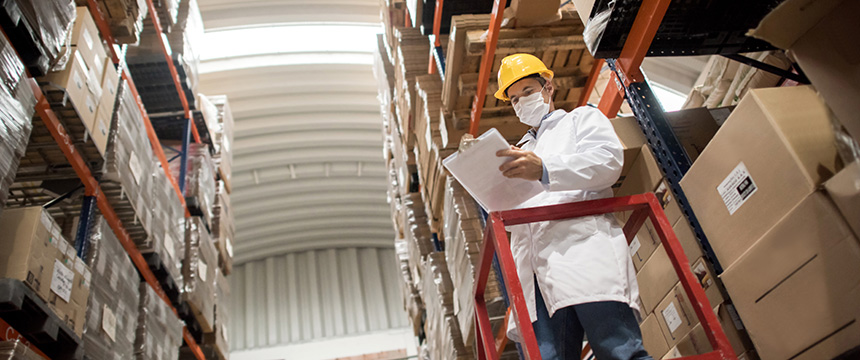Managing the Commercial Impact of the Coronavirus: An Effective Supply Chain Response Plan

“We are in a phase of preparedness for potential pandemic . . . Let’s focus on what we can do and need to do, which is prepare.” (~ Dr. Mike Ryan, WHO Executive Director of Health Emergencies Programme, quoted during a press briefing this week)
The coronavirus (provisionally named SARS-CoV-2, with its disease being named COVID-19) has now been documented in six of the world’s seven continents, with more than 90,000 cases, sparing only Antarctica. Closer to home, the message this week from the Centers for Disease Control and Prevention (CDC) was clear: the coronavirus is spreading and will get worse – not better – in the near term. The outbreak is greatest in countries located in Asia and now, Europe. The Principal Deputy Director of the CDC, Dr. Anne Schuchat, held a press briefing on Tuesday, stating that “current global circumstances suggest it is likely that this virus will cause a pandemic.”
At the epicenter of the coronavirus is the important worldwide manufacturing hub of Wuhan, China. The recent spread to other major manufacturing hubs further impacts the global economy and supply chains in ways not seen since the SARS outbreak in 2003. Coronavirus fears are being blamed for the S&P 500 losing an estimated $1.737 trillion in value in just two days this week.
At the center of the financial impact is the growing disruption to worldwide supply chains across many industries. The impact is being acutely felt by automotive manufacturers, who build vehicles on a just-in-time basis and depend upon a timely and uninterrupted supply of materials and components. China is reportedly responsible for more than $40 billion of parts production for the automotive industry, including $20 billion for customers located in the United States. The mandatory evacuation and closure of many businesses in China has closed the operations of many manufacturing facilities and distributors located in China’s 23 provinces, including the Hubei Province where Wuhan is located. Although initially the impact of the coronavirus was muted by parts that were on hand, parts that were already in shipment, and parts held in suppliers’ safety stocks, as the coronavirus outbreak deepens, that supply will undoubtedly run short. This is confirmed by reports of parts shortages by various original equipment suppliers (OEs) across the world, including in China (where car sales are estimated to drop by 40% in the first two months of 2020), the United States and Europe.
But, the impact to the supply chain goes beyond the automotive industry, affecting virtually every sector, including manufacturing, healthcare, hospitality, technology, solar and more. In fact, according to Fortune.com, 94% of Fortune 1000 manufacturers are being hit with disruptions as a result of the coronavirus.1 While there are reports that a very limited number of suppliers in the most affected regions have resumed operations, many have not, and now there are reports of manufacturing operations being interrupted in Europe (for example, in Serbia and Italy). Some companies have already extended plant closures into mid-March. In the case of manufacturing, it just takes one missing part to shut down a production line, and the damaging ripple effect of a material or parts shortage quickly spreads throughout the supply chain.
As the coronavirus outbreak continues to develop, now is the time for manufacturers to develop and execute an effective supply chain response plan in order to mitigate their risk and prepare for how they will address any interruption to either their operations or those of a critical supplier. An effective coronavirus response plan should include the following:
Supply Chain Operations. First, companies should establish an interdisciplinary crisis response team to identify, assess and manage the risk to the supply of materials and parts necessary to continue to maintain production and quality. The team should include personnel from purchasing, operations (plant level), quality, finance and legal.
- Communicate with Critical Suppliers. When the response team identifies the mission critical materials and parts, companies should consider proactively reaching out to those suppliers to determine what level of inventories they are carrying, what potential subcomponents of such parts may be or become in short supply, and what actions the suppliers are taking to prepare. Further, companies should redeploy resources in order to build additional banks of parts and/or onboard alternative suppliers, in each case if feasible from an operational, timing, and cost perspective.
- Review Purchase and Supply Contracts to Determine What “Force Majeure” Rights and Requirements May Apply.2 Force majeure refers to a legal doctrine under which a party may be relieved from liability for non-performance if circumstances beyond the party’s control prevent the party from fulfilling its obligations under a contract. Force majeure provisions can vary greatly depending on how they were drafted by the parties, but they usually cover several categories of events that could impact suppliers and customers across the supply chain. While most force majeure provisions are unlikely to list disease, epidemics, or quarantine specifically, many include general provisions covering such things as natural disasters, “acts of God,” acts of government, or “other circumstances beyond the parties’ control.” The coronavirus outbreak presents a somewhat unique situation in that it includes both a naturally occurring component (the virus itself) and a government action component (including the quarantines and other measures put in place in response to the outbreak). Parties should carefully review the force majeure provisions in their contracts to determine whether they apply. Any party seeking to invoke the force majeure provisions in its contract usually must show that there are no alternative means for performing under the contract, as increased costs alone will not be sufficient to prevail on a claim of force majeure.
- Monitor Customer Demands. Companies should monitor customers to ensure that they will comply with their contractual obligations, including timely payment for parts supplied to the customer. For those customers with a greater risk of nonpayment (for example, an OE who may suspend production under a certain program), companies should analyze contractual payment terms. Companies should then evaluate whether to seek to enforce remedies available to a seller of goods under the Uniform Commercial Code, including demands for adequate assurance of payment or a change in payment terms.
- Review Allocations. Manufacturers should review allocation requirements and obligations to multiple, competing customers for potentially scarce materials as manufacturing operations ramp back up.3
M&A Agreements. Companies who are parties to definitive M&A agreements should review any “Material Adverse Change” (MAC) clauses, and representations and warranties, to assess the potential impacts of the coronavirus on their transaction. For attorneys drafting and reviewing definitive M&A agreements now, care should be taken in crafting or reviewing appropriate MAC clauses, representations and warranties and other provisions to take the potential impacts of coronavirus into account. On the buy side, enhanced focus on supply contract due diligence is recommended.
Reporting Requirements. Public companies should review and make accurate required disclosures, in the event that business operations are impacted such that a reporting requirement is triggered. All companies who are parties to credit agreements and other financing arrangements should review existing MAC clauses, and potential impacts on the borrower’s financial covenant compliance, in order to determine whether any proactive conversations with lenders may be warranted.
Insurance. Companies should review insurance policies to determine possible coverage in the event of a business disruption, and comply with all applicable notice requirements.
Employment Concerns. The challenges for any business facing coronavirus or any other disease outbreak involve a multitude of conflicting legal obligations. Under the Occupational Safety and Health Act (OSHA) and similar state laws, employers have a general duty and obligation to provide a safe and healthy work environment, even when the work occurs outside the employer’s physical premises. Furthermore, under these health and safety laws, employers must not place their employees in situations that are likely to cause serious physical harm or death. Conversely, overreacting by implementing broad-based bans and making business decisions about employees that are not based on statistical realities could get an employer sued under laws that prohibit discrimination based upon disability (perceived or real) and national origin discrimination, among others. Properly planning for and implementing plans to deal with the coronavirus is legally and operationally complex. For more information on specific action employers should take, please click here.
In summary, it is important for manufacturers to take additional steps now in order to mitigate their risk of suffering negative impacts from the coronavirus. For more information about this, please contact your Foley relationship partner. For additional web-based resources available to assist you in monitoring the spread of the coronavirus on a global basis, you may visit the CDC and the World Health Organization.
———————————————–
1https://www.foley.com/en/insights/news/2020/02/uetz-quoted-fortune-impact-coronavirus-auto
2https://www.foley.com/en/insights/publications/2020/01/commercial-impact-coronavirus-force-majeure
3https://www.michbar.org/file/barjournal/article/documents/pdf4article1767.pdf
———————————————–
Click here for Foley’s Coronavirus Resource Center for insights and resources to support your business during this challenging time.



